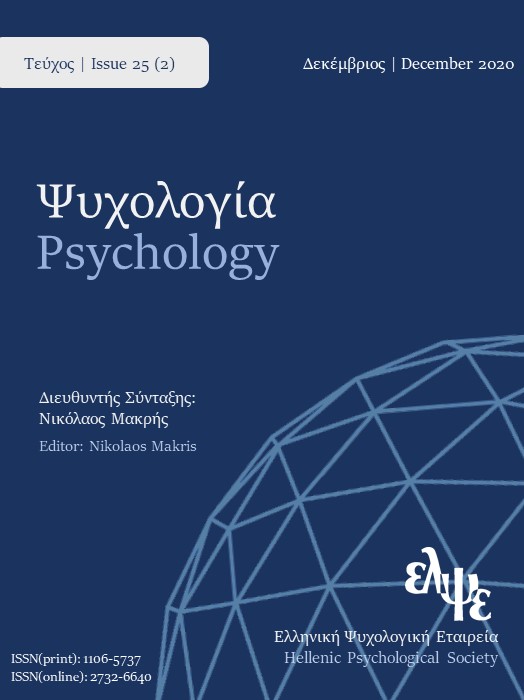The correlation between the disordered eating attitudes and the adult attachment style, through the mediation of the differentiation of self

Abstract
The present study examines the correlation between the disordered eating attitude and the adult attachment style, through the mediation of the differentiation of self. The research sample consisted of 302 greek-speaking adult participants. The participants received the self-completion questionnaires Eating Attitudes Test (EAT-26), for the evaluation of the eating attitude, Experiences in Close Relationships - Revised (ECR-R), for the evaluation of the adult attachment style, and Differentiation of Self Inventory (DSI), for the evaluation of the differentiation of self. The analyses resulted in statistically important correlations between the adult attachment and the differentiation of self, between the disordered eating attitude and the differentiation of self, and between the disordered eating attitude and the adult attachment. The study also identified differences regarding the gender, both in the symptomatology of eating disorders and in the dimensions of the differentiation of self. Lastly, the study found statistically significant mediation of the differentiation of self in the correlation between the disordered eating attitude and the adult attachment. Therefore, it was found that the relation between the disorder eating attitude and the adult attachment is partially indirect, as it is mediated by the third variable, the differentiation of self.
Article Details
- How to Cite
-
Kremmyda, N., & Tantaros, S. (2024). The correlation between the disordered eating attitudes and the adult attachment style, through the mediation of the differentiation of self . Psychology: The Journal of the Hellenic Psychological Society, 29(2), 37–56. https://doi.org/10.12681/psy_hps.34894
- Section
- RESEARCH PAPERS

This work is licensed under a Creative Commons Attribution-ShareAlike 4.0 International License.
The journal PSYCHOLOGY adopts a Platinum open-access policy. Submission, processing or publication costs are waived by the Hellenic Psychological Society. Papers published in the journal PSYCHOLOGY are licensed under a 'Creative Commons Attribution-ShareAlike 4.0 International' licence. The authors reserve the copyright of their work and grant the journal the right of its first publication. Third-party licensees are allowed to use the published paper immediately after publication as they wish, provided they retain the defined by the license copyright formalities, regarding the reference to its author(s) and its initial publication in the journal PSYCHOLOGY. Moreover, any adjusted work should be shared under the same reuse rights, so with the same CC license.





